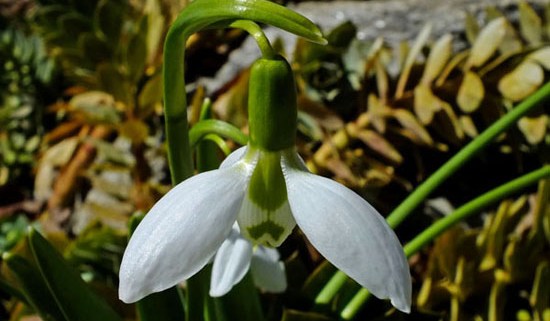Last week we had the simple answer to the ‘up’ and ‘down’ of a seed – sowing wise. Again, do not worry about the position of the seeds when sowing. Due to gravitropism, the radicles will always go ‘down’ and the cotyledon leaf(ves) ‘up’.
For those willing to know more about this subject, theoretically we would be able to tell the up and down of a seed by ‘reading’ the few scars that remain on the seed coat during the seed formation (after fertilisation).
To explain more, a few botanical terms that may not be familiar to all will be used. For clarification I provide links to the excellent botany glossary developed on the Angiosperm Phylogeny Website from Missouri Botanical Garden.
I quote a paragraph from the introductory notes, because I think it should give us all a moment of meditation. Keep in mind that in nature nothing is ‘white & black’, there are endless variations to all situations.
Here we go.
On the seed coat we can identify 2 main scars: the micropyle and the hilum (in most species, but there are exceptions) that can be used to identify the ‘up’ and ‘down’ of a seed. In some cases we can also see a sort of ‘suture’ along the seed, called raphe, and various excrescences like the caruncle, which is usually near the micropyle.
It is useful to know from what type of ovule the seed was formed. For the vast majority of flowering plants the seeds are born from an anatropous ovule, so we will consider it as default. In this case, the micropyle is very close to the hilum. 
Post-fertilization the micropyle remains as a small pore in the seed coat, which facilitates the entry of oxygen and water into the seed during germination. The radicle of the embryo will emerge through the micropyle.
So, by locating the micropyle on the seed surface, one would know which side is up and which one is down.
What’s simple in theory many times, it is not the same in practice. The micropyle doesn’t persist in all seeds, or it is impossible to see it with the naked eye. But the hilum is often a larger scar (at least on larger seeds), and we can search for it.
We can take Caulophyllum as an example, because for monitoring the embryo development I took many seeds images years ago.
*Also, keep in mind that for practical purposes sometimes we call various fruits ‘seeds’ (the achenes for examples). What we see in this case is the fruit surface not that of the seed coats.
In very rare cases the seeds are ‘born’ from an orthotropous (atropous) ovule. In this case the micropyle is on the same line, opposed to the hilum. A well-known species whose seeds are formed from such an ovule is Symplocarpus foetidus, the skunk cabbage. Same goes for Arisaema (and most of Araceae family).
 The germination of skunk cabbage has intrigued me when I first observed it, because the radicle emerge almost at the same time or after with the shoots through the hilum. This has to do also with the fact that the seed embryo can have different sizes and positions in the seed: it can be straight, curved, convoluted and so on.
The germination of skunk cabbage has intrigued me when I first observed it, because the radicle emerge almost at the same time or after with the shoots through the hilum. This has to do also with the fact that the seed embryo can have different sizes and positions in the seed: it can be straight, curved, convoluted and so on.
In the case of the skunk cabbage seeds, you would think there is no up and down at the beginning, but they figure it out soon after germination :-)
Without going into details, there are other sub-variants of the anatropous and orthotropus ovules; it is also worth noticing that in flowering plants most of the ovules are curved.
A simple example is the campylotropus ovule found in the legume family. In this case, the micropyle is almost touching the hilum (see Lespedeza germination).
So, in theory it looks good but imagine looking for the micropyle on a poppy seed :-) On the following plate, we can observe though that on the small seeds of Primula sieboldii, the micropyle/hilum area is visible.
A reminder about the SEEDs LIBRARY where those interested can try to locate, where possible, the micropyle/hilum area on various seeds.

1. Arisaema triphyllum (orthotropus ovule); From anatropus ovules 2. Amphicarpaea bracteata; 3. Disporum; 4. Streptopus amplexifolius; 5. Chamaecytisus hirsutus (with caruncle); 6. Primula sieboldii.
We have a particular situation in the Liliaceae family where by looking at the seeds through a backlight, usually we can see the embryo; even more so after the seeds are imbibed with water. So, it is fairly easy to tell the ‘up’ and the ‘down’ (at pointed end).
Based on other images I have in my ‘germination library’, it looks like most times the root will emerge from the ‘pointed’ side of the seeds; however, not all seeds have such a side.
To conclude, sometimes we could tell the up and down of a seed by ‘reading’ the seed coat, especially for medium size and large seeds, but this is not always the case. From the point of view of sowing I don’t think it matters, even for larger seeds. In nature, no one arranges them when they fall on the ground.
A nice weekend to all. Enjoy the season of ten thousand flowers!


























